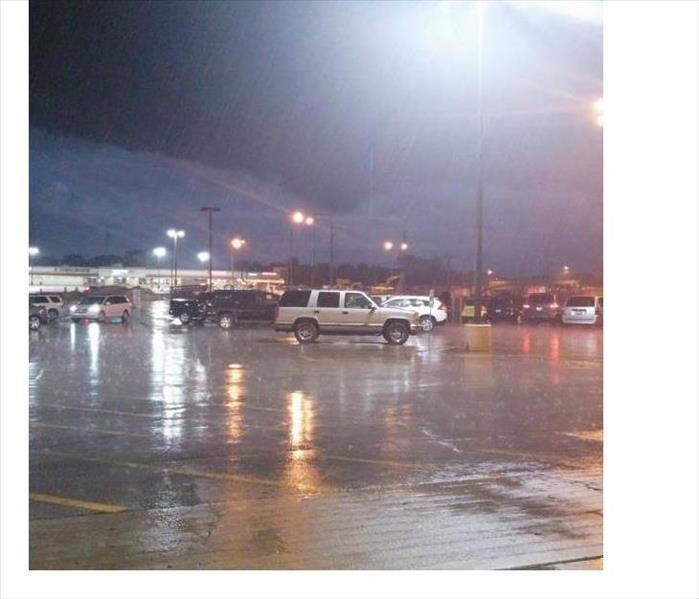Warning Systems – Wireless & Siren Alerts
8/16/2017 (Permalink)
The Emergency Alert System (EAS) is a national public warning system that requires broadcasters, cable television systems, wireless cable systems, satellite digital audio radio service (SDARS) providers, and direct broadcast satellite (DBS) providers to provide the communications capability to the President to address the American public during a national emergency. The system also may be used by state and local authorities to deliver important emergency information, such as AMBER alerts and weather information targeted to specific areas.
Tornado Sirens
What should I do when I hear the sirens?
When you hear tornado sirens, go inside and tune to local media to get more information.
Why can’t I hear the sirens in my house?
Sirens are an outdoor warning system designed only to alert those who are outside that something dangerous is approaching.
How can I get alerts when I’m at work or in my house?
For alerts indoors, every home and business should have a NOAA Weather Radio All-Hazards. NOAA Weather Radio is like a smoke detector for severe weather, and it can wake you up when a warning is issued for your area so you can take appropriate action.
When are sirens tested?
Sirens are tested according to local community policies. This policy in the Chicagoland area is the system is tested every Tuesday at 10am.
Why don’t the outdoor warning sirens sound an all-clear signal?
People should be indoors and monitoring local media for updates on the storm.
Will the sirens warn me of every dangerous storm?
The safest approach is to be proactive and use all of the information available to protect yourself and your family from threatening weather. Nothing can replace common sense. If a storm is approaching, the lightning alone is a threat. Sirens are only one part of a warning system that includes preparation, NOAA Weather Radio, and local media.
Who activates the sirens?
Sirens are typically activated by city or county officials, usually a police or fire department or emergency management personnel. Check with your city or county officials to learn more.
Wireless Emergency Alerts
During an emergency, alert and warning officials need to provide the public with life-saving information quickly. Wireless Emergency Alerts (WEAs), made available through the Integrated Public Alert and Warning System (IPAWS) infrastructure, are just one of the ways public safety officials can quickly and effectively alert and warn the public about serious emergencies.
What you need to know about WEAs:
- WEAs can be sent by state and local public safety officials, the National Weather Service, the National Center for Missing and Exploited Children, and the President of the United States
- WEAs can be issued for three alert categories – imminent threat, AMBER, and presidential
- WEAs look like text messages, but are designed to get your attention and alert you with a unique sound and vibration, both repeated twice
- WEAs are no more than 90 characters, and will include the type and time of the alert, any action you should take, as well as the agency issuing the alert
- WEAs are not affected by network congestion and will not disrupt texts, calls, or data sessions that are in progress
- Mobile users are not charged for receiving WEAs and there is no need to subscribe
- To ensure your device is WEA-capable, check with your service provider
NOAA All-Weather Radio
If you don’t have a NOAA Weather Radio, there are other methods for receiving forecasts, watches and warnings from the National Weather Service. Tune in to your local radio and television stations for the latest news and updates on the situation, and visit weather.gov for information about weather radios and other online services.
All individuals living or working in tornado-prone areas should have a weather radio inside their home or place of work. A weather radio is particularly important for those living in an area that does not have storm warning sirens. All-weather radios broadcast National Weather Service warnings, watches, forecasts, and other hazard information 24 hours a day, and post-event information for all types of hazards, both natural and technological.
NOAA Weather Radios are available at electronics stores across the country and range in cost from $25 to $100 or more, depending on the quality of the receiver and number of features. The NWS does not endorse any particular make or model of receiver.
What to Look for in a NOAA Weather Radio
- The most desirable feature is an alarm tone. This allows you to have the radio turned on but silent, listening for a special tone that is broadcast before watch and warning messages that give immediate information about a life-threatening situation.
- Specific Area Message Encoding (SAME) technology, a feature available since the mid-1990s, is capable of providing detailed, area-specific information. Unlike other NOAA Weather Radios, the SAME feature will filter out alerts that do not affect your immediate area.
- It should operate on batteries during times when electrical service may be interrupted. Look for radios with an AC adapter and battery compartment.
- The radio should be tunable to all seven NWR frequencies. For the latest list of frequencies and transmitter locations, check the NOAA Weather Radio website.
- The hearing and visually impaired can receive watches and warnings by connecting weather radio alarms to other kinds of attention-getting devices, such as strobe lights, pagers, bed-shakers, personal computers, and text printers.
Please be safe during these times of possible disaster. If a disaster does occur call SERVPRO of Southern McHenry County at 847-516-1600.
source
https://www.fema.gov/integrated-public-alert-warning-system






 24/7 Emergency Service
24/7 Emergency Service
